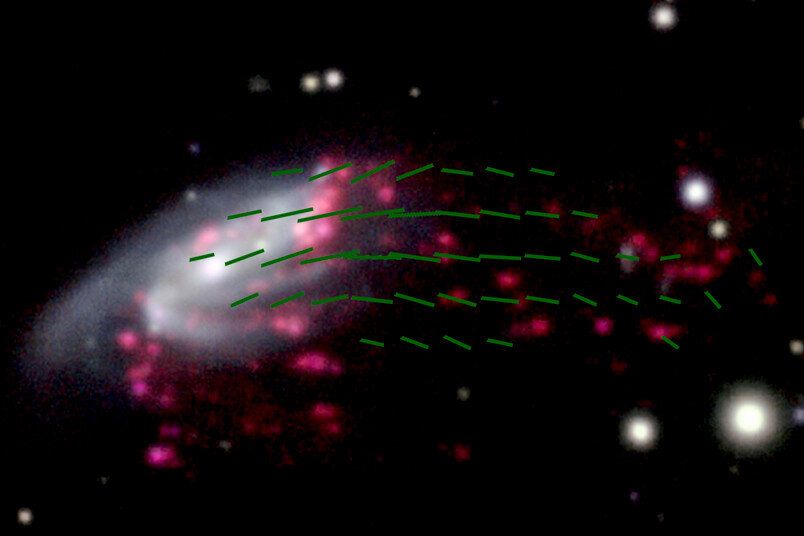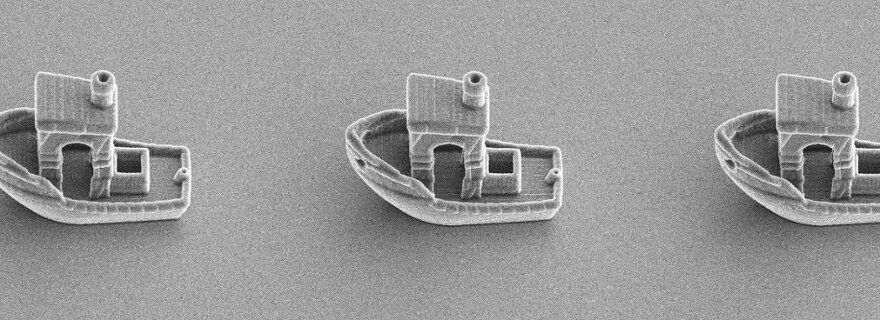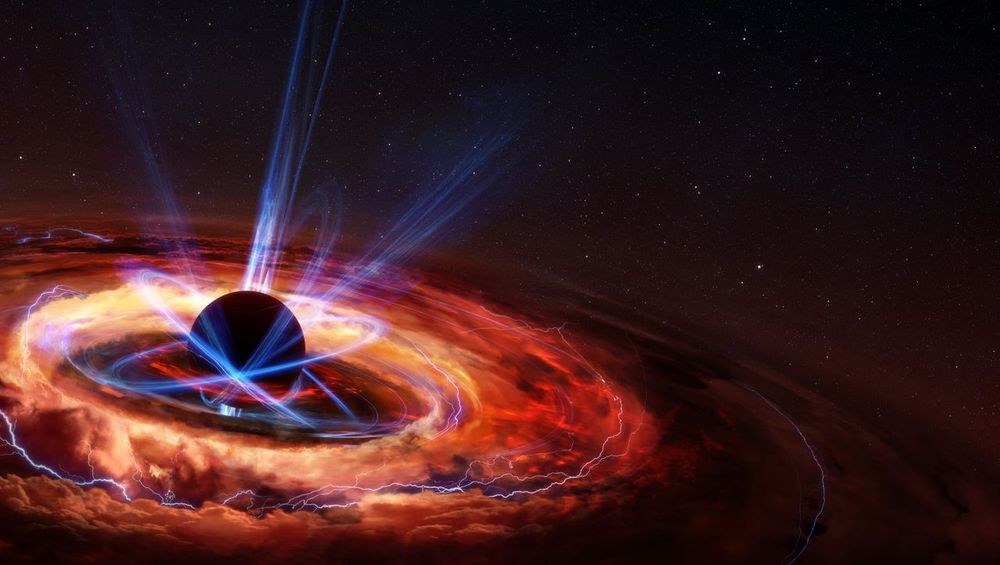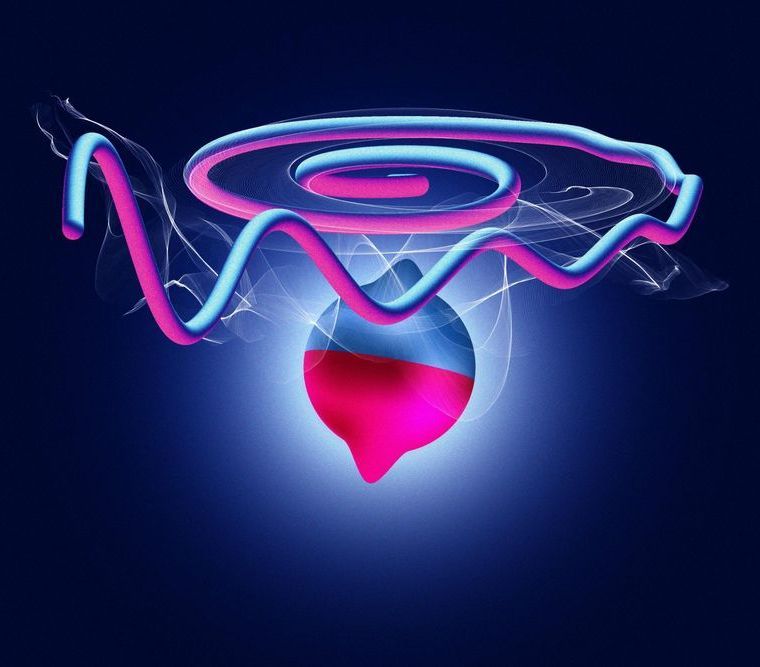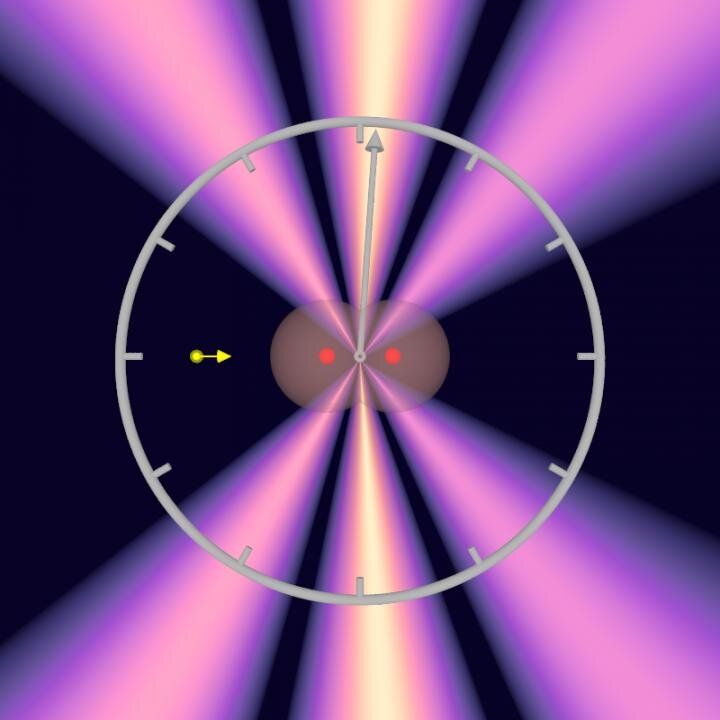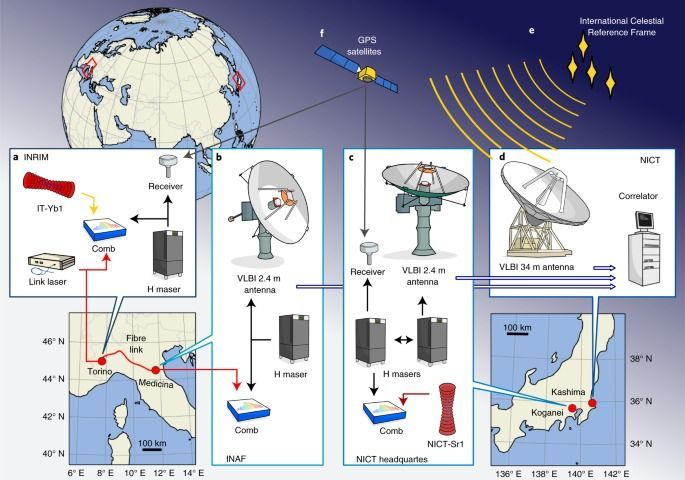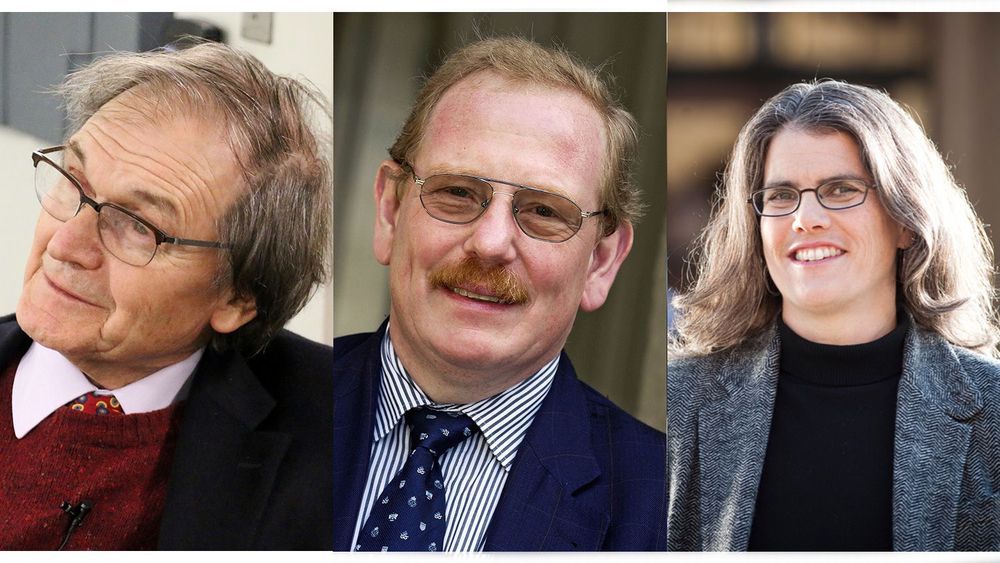An international team of astronomers has gained new insights into the physical conditions prevailing in the gas tail of so-called jellyfish galaxies. They are particularly interested in the parameters that lead to the formation of new stars in the tail outside the galaxy disk. They analyzed, for example, the strength and orientation of the magnetic fields in the galaxy JO206.
Ancla Müller and Professor Ralf-Jürgen Dettmar from Ruhr-Universität Bochum describe their findings together with Professor Christoph Pfrommer and Dr. Martin Sparre from the Leibniz Institute for Astrophysics in Potsdam as well as colleagues from the INAF—Italian national institute of Astrophysics in Padua, Selargius and Bologna in the journal Nature Astronomy from 26 October 2020.
